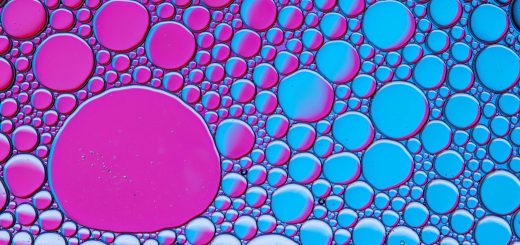How Many Ounces Are in a Cup? Everything You Need to Know

Before diving in, please note: This post is for informational purposes only. If you’d like to know more about how we approach topics, feel free to check out our friendly Disclaimer Page.
Hey there, amazing readers! 🖐️ Just a quick note: yes, we know there are a lot of ads here. Trust us, we get it—it’s not the prettiest look, but they help us keep this blog alive and kicking. Those pesky little ads cover the costs of all the behind-the-scenes magic, from hosting and tech stuff to creating content we hope you’ll love.
We’re committed to delivering quality posts, and your support (even just sticking around despite the ads) means everything to us. So, bear with us, and thanks for helping us keep the good vibes rolling. Now, on to the fun stuff! 😉
TRANSLATE BUTTON AT THE END OF THE ARTICLE
Whether you’re whipping up a batch of cookies or following a savory recipe, understanding measurements is key to culinary success.
One of the most common questions in cooking and baking is, “How many ounces are in a cup?” The answer seems straightforward, but it can vary depending on whether you’re measuring liquids or dry ingredients.
Let’s break it down step by step so you’ll always get it right in the kitchen.
How Many Ounces Are in a Cup?
For liquid measurements, 1 cup equals 8 fluid ounces (fl oz).
This is a standard measurement used in recipes across the United States.
So, if your recipe calls for 1 cup of water, milk, or any other liquid, you’ll know it’s equivalent to 8 ounces.
However, when it comes to dry ingredients, the story is a little different.
The weight of 1 cup in ounces depends on what you’re measuring because dry ingredients vary in density.
Liquid Measurements Made Simple
Let’s stick with liquids first since they’re the most straightforward.
Whether you’re pouring water, milk, juice, or even broth, the rule of thumb is:
1 cup = 8 fl oz
This is the same regardless of the type of liquid, making it easy to measure using a standard measuring cup.
Just make sure to use a liquid measuring cup (the kind with a spout) for accuracy.
Dry Ingredients: Why Weight Can Vary
When measuring dry ingredients, it’s not as simple as saying 1 cup equals 8 ounces.
Instead, we’re talking about weight, not volume, and different ingredients have different densities.
For example:
1 cup of flour weighs about 4.5 ounces
1 cup of sugar weighs about 7 ounces
1 cup of chocolate chips weighs around 6 ounces
This means that a cup of flour will not weigh the same as a cup of sugar, even though they both fill the same measuring cup.
How to Measure Dry Ingredients Correctly
To measure dry ingredients accurately, follow these steps:
Use a dry measuring cup (these are the ones without a spout).
Spoon the ingredient into the cup rather than scooping, which can compress the ingredient and result in too much.
Level off the top with a flat edge, like the back of a knife, to ensure precision.
If a recipe lists dry ingredients in ounces rather than cups, a kitchen scale is your best friend.
Weighing ingredients is the most accurate method, especially for baking, where precision is crucial.
Common Conversions for Dry Ingredients
To make life easier, here’s a quick reference table for some common dry ingredients:
| Ingredient | 1 Cup (Approx. Weight) |
|---|---|
| All-purpose flour | 4.5 oz |
| Granulated sugar | 7 oz |
| Brown sugar (packed) | 8 oz |
| Butter | 8 oz |
| Rolled oats | 3 oz |
Remember, these are general guidelines, and the actual weight may vary slightly depending on the brand or type of ingredient.
Converting Between Cups and Ounces
If you’re working with a recipe that uses ounces but you only have measuring cups, or vice versa, you can convert between the two.
Here’s how:
For liquids: Multiply the number of cups by 8 to get fluid ounces.
- Example: 2 cups × 8 = 16 fl oz
Discover "SUPERFOODS: The Key to Health and Balance🥗" 🌿🌺
- Example: 2 cups × 8 = 16 fl oz
For dry ingredients: Check the specific weight of the ingredient.
For instance, if 1 cup of flour weighs 4.5 ounces, 2 cups would weigh 9 ounces.
When Precision Matters
While most home cooks can get by with rough measurements, certain situations call for greater accuracy:
Baking: Precision is essential in baking.
Too much or too little of an ingredient like flour can drastically affect the outcome.
Specialty Recipes: If you’re making something like macarons or soufflés, even small measurement errors can lead to a recipe flop.
In these cases, using a kitchen scale is your best bet.
Tools to Simplify Measurements
If you’re not confident with conversions or measurements, here are some tools to make your life easier:
Measuring Cups: Use separate sets for liquid and dry ingredients for better accuracy.
Kitchen Scale: Perfect for weighing dry ingredients when precision matters.
Conversion Charts: Keep one handy for quick reference when switching between cups and ounces.
Conclusion
So, how many ounces are in a cup?
The simple answer is 8 fluid ounces for liquids, but for dry ingredients, it depends on the ingredient’s weight.
Understanding this distinction is a game-changer in the kitchen and ensures your recipes turn out exactly as intended.
Next time you’re cooking or baking, you’ll be equipped with the knowledge to measure like a pro.
Whether it’s a cup of water or a cup of flour, you’ll know exactly what to do to create culinary perfection!

The Enlightenment Journey is a remarkable collection of writings authored by a distinguished group of experts in the fields of spirituality, new age, and esoteric knowledge.
This anthology features a diverse assembly of well-experienced authors who bring their profound insights and credible perspectives to the forefront.
Each contributor possesses a wealth of knowledge and wisdom, making them authorities in their respective domains.
Together, they offer readers a transformative journey into the realms of spiritual growth, self-discovery, and esoteric enlightenment.
The Enlightenment Journey is a testament to the collective expertise of these luminaries, providing readers with a rich tapestry of ideas and information to illuminate their spiritual path.
Our Diverse Expertise 🌟
While our primary focus is on spirituality and esotericism, we are equally passionate about exploring a wide range of other topics and niches 🌍📚. Our experienced team is dedicated to delivering high-quality, informative content across various subjects ✨.
To ensure we provide the most accurate and valuable insights, we collaborate with trusted experts in their respective domains 🧑🏫👩🏫. This allows us to offer well-rounded perspectives and knowledge to our readers.
Our blog originally focused on spirituality and metaphysics, but we’ve since expanded to cover a wide range of niches. Don’t worry—we continue to publish a lot of articles on spirituality! Frequently visit our blog to explore our diverse content and stay tuned for more insightful reads.





